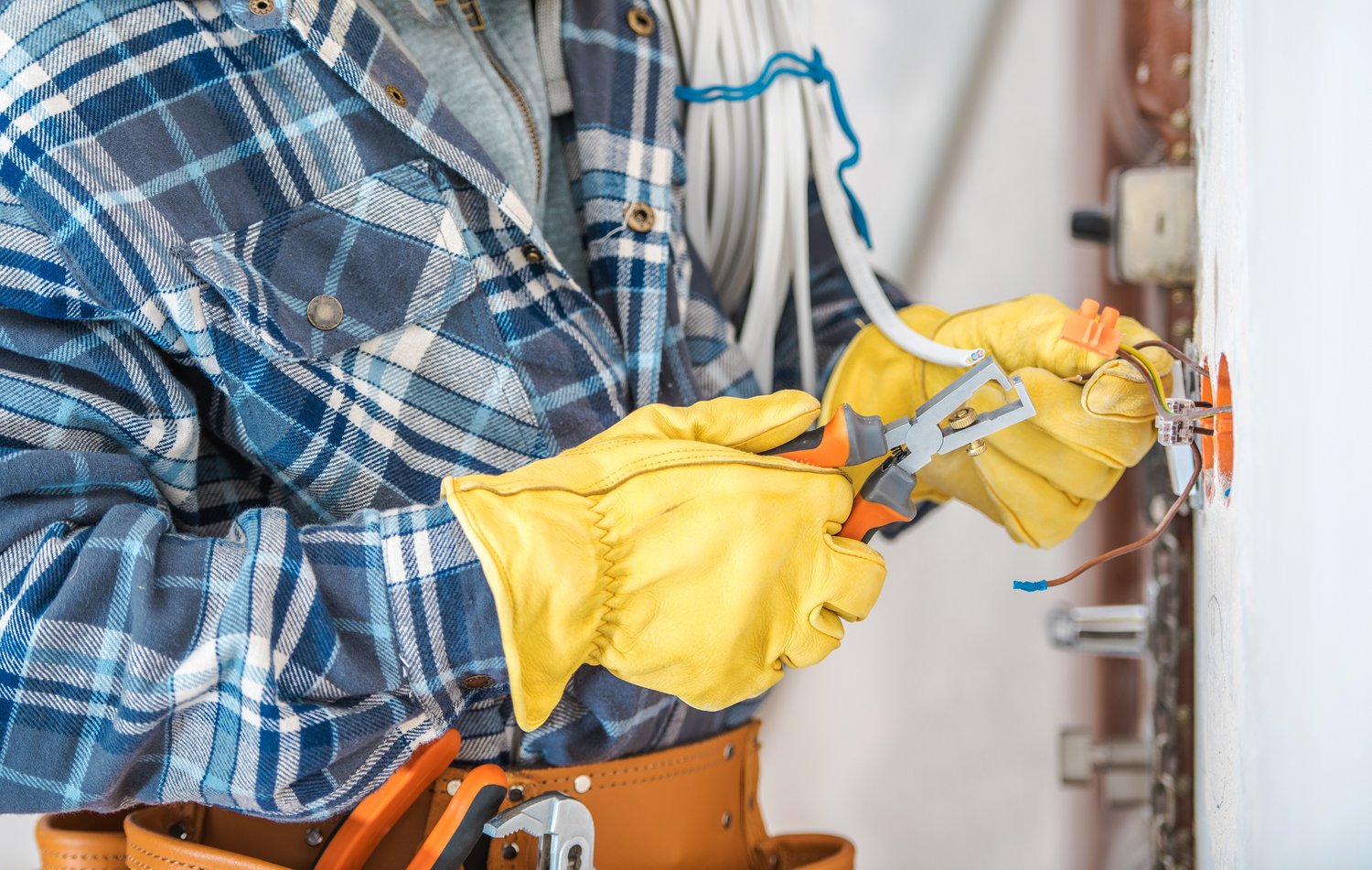Electricity keeps your home running—but when something goes wrong, it can be more than an inconvenience. Electrical issues aren’t just annoying—they can also pose serious safety risks like electrical fires, shocks, or damage to appliances. The good news? Many warning signs appear long before things become hazardous. Here’s what to look for so you can catch problems early and know when it’s time to call a professional.
Flickering or dimming lights
If your lights flicker when you turn on appliances or dim unexpectedly, it could signal a problem with your electrical system. Loose wiring, overloaded circuits, or faulty connections might be to blame. While occasional flickers may not be a big deal, consistent or widespread dimming is worth checking out—especially if it happens alongside other symptoms.
Warm outlets or switch plates
Outlets and switches should never feel hot to the touch. If they do, it could mean wires are loose or overloaded behind the wall, creating a fire hazard. In some cases, this warmth can lead to melting or burn marks. Turn off the power to the affected area and contact an electrician right away.
Frequent circuit breaker trips
Your circuit breaker protects your home by shutting off power when there’s a problem. If it trips occasionally, that’s normal. But if it happens frequently—or in the same area repeatedly—it could be due to an overloaded circuit, faulty appliance, or outdated wiring. Ignoring this issue could lead to overheating and fire risks.
Buzzing or crackling sounds
Electricity should be silent. If you hear buzzing, popping, or crackling sounds from outlets, switches, or behind walls, it may indicate arcing—where electricity jumps between connections. This is a major warning sign of damaged or deteriorating wiring and should be addressed immediately.
Burning smells near outlets or panels
A burning odor near outlets, light fixtures, or your electrical panel is never normal. It might smell like plastic or fishy residue, and often signals melting wires or overheating components. Shut off power to the affected area and have a licensed electrician inspect it right away to avoid a potential fire.
Outdated wiring or electrical panels
Older homes may have outdated wiring (like knob-and-tube or aluminum) or electrical panels that no longer meet safety codes. These systems weren’t designed to handle today’s power usage and may fail under modern loads. If your home is 40+ years old and hasn’t had an electrical update, it’s worth having an inspection.
Loose outlets or plugs that fall out
If your plugs don’t stay securely in outlets or the outlet itself wiggles when you plug something in, it can lead to arcing and overheating. Loose contacts inside the outlet can build heat over time and become a serious hazard. Replacing old outlets is a relatively quick and inexpensive fix with big safety benefits.
Extension cords everywhere
Relying on multiple extension cords and power strips can overload your electrical system. They’re meant for temporary use—not as a permanent solution. If you’re short on outlets, consider having additional ones installed in key areas to distribute power more safely and evenly.
Shocks when touching appliances or switches
If you feel a mild shock or tingle when touching appliances, outlets, or light switches, stop using that fixture and contact an electrician. This could be a sign of grounding issues or faulty wiring—and while the shock may be small, the risk behind it can be serious.
When to hire a licensed electrician
While some basic tasks—like replacing outlet covers or installing smart plugs—are safe for DIYers, diagnosing or repairing deeper electrical issues is not. If you’re unsure or spot any of the warning signs above, hiring a licensed professional is the safest route. You can easily find experienced electricians near you through AskHomey for peace of mind and proper repairs.
Follow AskHomey for more home safety tips
Want to keep your home safe, functional, and stress-free? Follow AskHomey on Instagram and Facebook for smart maintenance tips, project ideas, and safety checklists that every homeowner should know.



